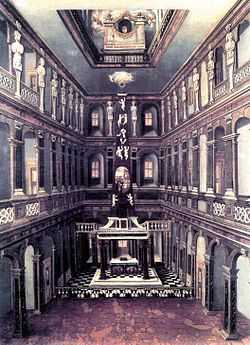Herz und Mund und Tat und Leben, BWV 147a

Schlosskirche in Weimar
Herz und Mund und Tat und Leben (Heart and mouth and deed and life), BWV 147a, is a cantata by Johann Sebastian Bach. It was composed in Weimar in 1716. The work was later expanded in 1723 as Herz und Mund und Tat und Leben, BWV 147.
History and text
On 2 March 1714 Bach was appointed concertmaster of the Weimar court capelle of the co-reigning dukes Wilhelm Ernst and Ernst August of Saxe-Weimar. As concertmaster, he assumed the principal responsibility for composing new works, specifically cantatas for the Schlosskirche (palace church), on a monthly schedule.[1] He likely wrote the work in 1716, his last year in Weimar, for the fourth Sunday of Advent, although it may not have been performed at the time. The prescribed readings for the day were from the Epistle to the Philippians (Philippians 4:4–7) and the Gospel of John (John 1:19–28). The cantata uses a text by Salomo Franck.[2]
Scoring and structure
The work was scored for four solo voices (soprano, alto, tenor, and bass) and a four-part choir.[3] As the music is now lost, the cantata's instrumentation is unclear, but was likely similar to BWV 147.
The piece has six movements:
- Chorus: Herz und Mund und Tat und Leben
- Aria: Schäme dich, o Seele nicht
- Aria: Hilf, Jesu, hilf, dass ich auch dich bekenne
- Aria: Bereite dir, Jesu, noch heute die Bahn
- Aria: Laß mich der Rufer Stimme hören
- Chorale: Dein Wort laß mich bekennen
References
